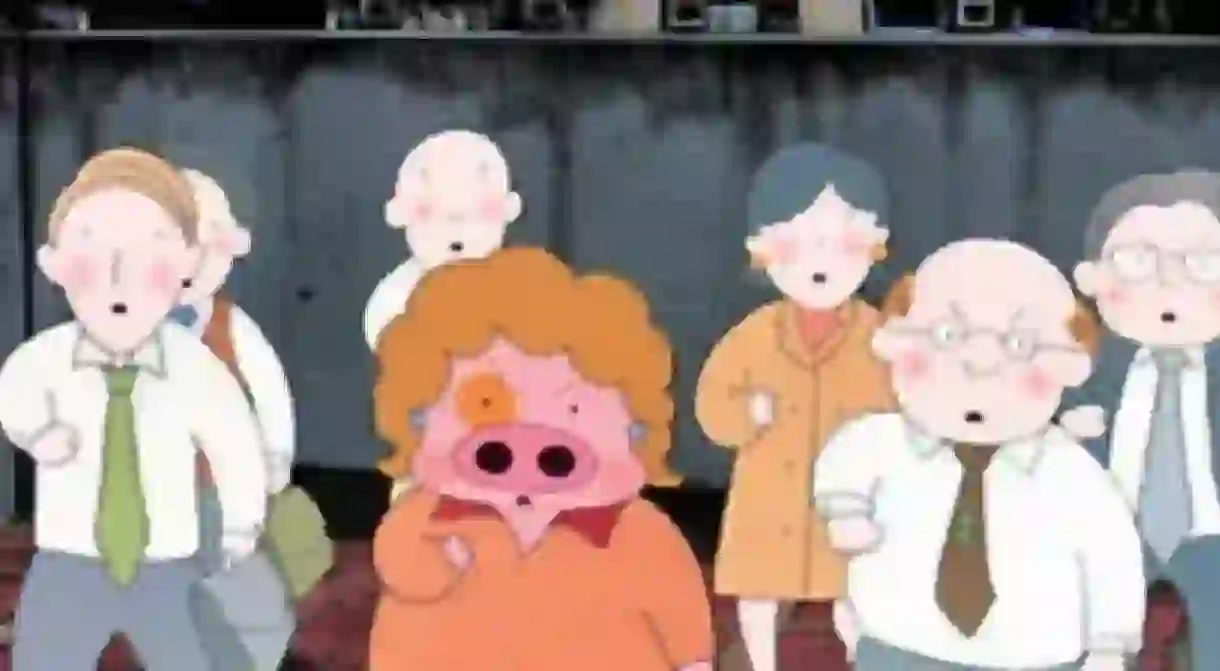My Life As McDull: Depicting The Realities Of Hong Kong

Pigs are rarely associated with positive attributes in most cultures. One exception however is McDull, and his friend McMug; two little school-pigs who have become Hong Kong’s most famous pig duo. McDull in particular has endeared himself to hordes of Hong Kong schoolchildren and grown-ups for his optimism and perseverance in the face of the hard realities of the world.
Written by Brian Tse Lap-man and drawn by Alice Mak Ka-pik, stories about McDull and McMug originally appeared as comics in different local children’s magazines in the early 1990s. Although McMug was initially the protagonist, McDull has endeared himself to hordes of Hong Kong schoolchildren and grown-ups for his optimism and perseverance. In 2001, the animated feature film My Life as McDull won widespread acclaim and was awarded the 2002 FIPRESCI Prize at the 26th Hong Kong International Film Festival. Directed by Toe Yuen, this Hong Kong-produced animated film, a rarity in the industry, was popular with children and adults alike.
My Life as McDull starts with the birth of McDull and tells of McDull and Mrs Mak’s quest to live a more comfortable life, the goal of so many Hong Kong residents. So when McDull reaches the age for schooling, his mother hopes to send him to a good kindergarten. Later, inspired by Hong Kong surfer Lee Lai Shan, a Gold medallist in the 1996 Atlanta Olympics, Mrs Mak tries to find ways to turn her son into the next Olympic champion. But as life goes on, it becomes increasingly apparent that McDull is far from being the brightest or the most athletic kid. In spite of disappointment after disappointment, neither Mrs Mak nor McDull gives up on dreaming big. Throughout the film, the bitter sweet nature of life is further underscored by McDull’s sense of contentment, unspoilt innocence and happy-go-lucky attitude.
The plot and details of the story of My Life as McDull show a thorough awareness of Hong Kong culture and provide ample insight into the colonial culture that is fully integrated and deeply rooted in Hong Kong. Take, for instance, the name ‘McDull’. It may sound like an eccentric Scottish name, but it is, in fact an Anglo-transliteration of the Chinese/Cantonese name ‘Mak Dao’, with Mak being the surname. Other reflections of attempts by Hong Kong people to appear Westernised, and thus move up the colonial social ladder, include using classical music pieces like Mozart’s ‘Turkish March’ and Schumann’s ‘Kinderszenen’ for almost all of the sound tracks, and coupling them with hilarious Cantonese lyrics.
On the other hand, the film is not short on elaboration of the cultural pride of Hong Kong, especially beloved local food like egg tarts and pork buns. In addition, the film script is full of ingenious jokes and puns that would make any Cantonese viewer roll on the floor laughing. Behind the hilarity, the deeper meanings of the story are nonetheless readily obvious to older viewers. Common to most stories is a lurking sense of sadness and disappointment, often propelled by the disparity between innocent hopes and unfulfilled promises.
Graphically, My Life as McDull has done an exceptional job of depicting the deteriorating inner city where Mrs Mak and McDull live. The grey blocks and the rusted metal window frames are an everyday reality for many living outside the central business district. Indeed, one reason for the widespread popularity of McDull is that he lives in a believable, recognisable world. Life in McDull’s Hong Kong is not the world of glamorous glossy pictures, but rather filled with quotidian details. Indeed, the animated Hong Kong of McDull and McMug is authentic. Authentic in its daily struggles, authentic in the unvarnished grime, the competition, the pressures and the disappointments. Failure is real in this world; it is a driving force in the story.
All these not only highlight Hong Kong as a uniquely culturally hybrid city, but also explain partly why the film won the hearts of Hong Kong residents from all walks of life.













